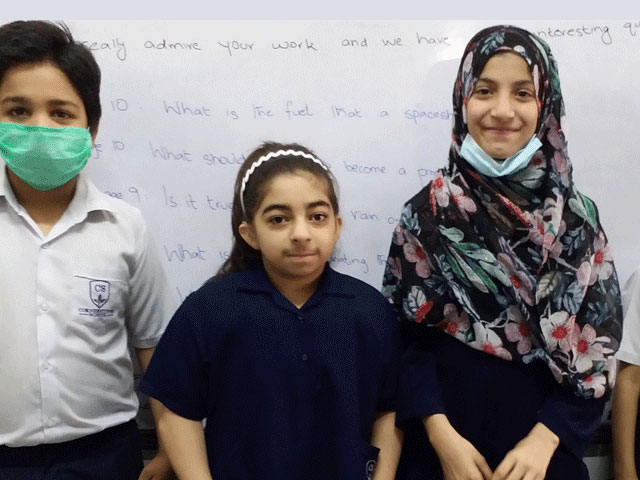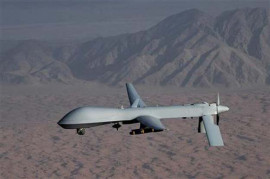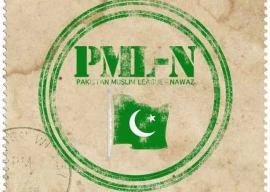
“Somewhere, something incredible is waiting to be known,” said science hero and educator Carl Sagan about the role curiosity can play in understanding the cosmos and our place within it. While he was talking about breeding a larger sense of skepticism as a practice accessible to all human beings, this short but significant story of knowing would have brought a smile to his face.
On Wednesday, a fourth-grade science teacher from Karachi was talking to her students about space and what lies beyond the earth. Aimun Faisal encouraged her students to look beyond the horizon and send their questions to astronauts at NASA and other administrations around the world. She then took to Twitter and shared the questions along with the pictures of the six fourth-graders who asked them and tagged NASA and its sister accounts. "These fourth graders have some questions for you," she wrote.
These fourth graders have some questions for you.@NASA @Space_Station @NASAEarth @NASA_Johnson @NASA_Astronauts @NASAKennedy @MarkRober @DestinSandlin @TheSpaceGal @neiltyson
— Aimun (@bluemagicboxes) October 14, 2020
(Please share) pic.twitter.com/TiV0WCD1vG
The letter further read, "Dear NASA, we are students of grade 4 in The Cornerstone School in Karachi, Pakistan. We read all about you in our books and are fascinated by your adventures in space. We really admire your work and we have some questions for you, please reply when you have time."
The letter then included six questions from students, Alisha, Minahil, Haniyah, Mahrukh, Anabiya, Rayyan. Like an uninteresting day in outer space, nothing really happened but that didn’t continue to happen. Soon several social media caught on and started retweeting the original tweet and tagging relevant accounts on Twitter.
A hashtag of #Grade4HasQuestions started making rounds on Twitter. Many joined the cause and it made enough noise to receive the first response from none other than an astronaut! Chris Hadfield, a Canadian astronaut, responded to Mahrukh's question first. "How do you feel when you get blasted off in a space shuttle?" Hadfield, who went to space thrice, responded, "Mahrukh - I flew in the Space Shuttle twice. You feel violently shaken, squished, super-focused, excited, and lucky."
Mahrukh - I flew in the Space Shuttle twice. You feel violently shaken, squished, super-focused, excited and lucky. https://t.co/156xQxW3J3
— Chris Hadfield (@Cmdr_Hadfield) October 14, 2020
He went on to respond to Rayyan's inquiry of whether the astronauts get scared that their space shuttle might get lost? To this, Hadfield answered, "Rayyan - I wasn't scared we'd get lost. We had the Earth nearby and used the stars to steer. I felt especially comforted when I flew over the home." He went on to share a picture of Karachi he took! "Can you find your school?" Hadfield quipped.
Rayyan - I wasn't scared we'd get lost. We had the Earth nearby, and used the stars to steer. I felt especially comforted when I flew over home. Here's a photo I took of Karachi - can you find your school? https://t.co/QBgI7W7weC pic.twitter.com/qrUYHr8GqY
— Chris Hadfield (@Cmdr_Hadfield) October 14, 2020
Emily Calandrelli, Emmy-nominated host/scientist, responded to all the inquiries of the kids as well. Alisha wanted to know the kind of fuel rockets use and Calandrelli responded in detail. "Alisha - All different types! Some popular rockets that you'll see will use a fuel + an oxidizer. For example, something called RP-1 and then liquid oxygen. These are combined together and then *ignited* and burned to create a big (controlled) explosion that moves the rocket!" she wrote.
Alisha - All different types! Some popular rockets that you'll see will use a fuel + an oxidizer. For example, something called RP-1 and then liquid oxygen. These are combined together and then *ignited* and burned to create a big (controlled) explosion that moves the rocket! 🚀
— Emily Calandrelli (@TheSpaceGal) October 14, 2020
Talking about Minahil's question as to what she has to study in order to be enrolled in NASA, Calandrelli shared,“NASA needs all types of people for their missions! Mostly scientists and engineers (so studying a STEM degree is a good idea!) but also IT people, human resources specialists, accountants, technicians, writers, etc! But remember you will probably need to be a US citizen."
Minahil - NASA needs all types of people for their missions! Mostly scientists and engineers (so studying a STEM degree is a good idea!) but also IT people, human resources specialists, accountants, technicians, writers, etc! But remember you will probably need to be a US citizen
— Emily Calandrelli (@TheSpaceGal) October 14, 2020
Does it really rain diamonds on Jupiter? Mahrukh wanted to know and Calandrelli quipped it was 'definitely possible!'
"The same physics and chemistry that creates diamonds here on Earth (putting Carbon under super high heat/pressure) exist on planets like Jupiter, so some scientists hypothesise that it's raining diamonds there! Wouldn't it be fun to see that?!" she penned.
Anabiya - NASA is discovering new things all the time (about the universe, our solar system, and our own bodies!), but in my opinion their best work is on our own planet. NASA's Earth Observing System studies the Earth and shows us how climate change is affecting our planet.
— Emily Calandrelli (@TheSpaceGal) October 14, 2020
Answering Anabiya's question of what would be the most exciting thing an astronaut might have discovered, Calandrelli said, "NASA is discovering new things all the time (about the universe, our solar system, and our own bodies!), but in my opinion, their best work is on our own planet. NASA's Earth Observing System studies the Earth and shows us how climate change is affecting our planet."
The fourth-graders also received responses from German Aerospace Center (Deutsches Zentrum für Luft- und Raumfahrt; DLR).
Thank you for your great questions! We have already received an answer to Haniyah’s question from @DLR_de planetary geologist Ulrich Köhler: “The „diamond rain“ is rather a theory, a model, based on the fact that Jupiter’s atmosphere and gas hull has plenty of carbon inside.”👇 https://t.co/tqlu4EUUIg pic.twitter.com/jcLB4kTr20
— DLR - English (@DLR_en) October 14, 2020
On Thursday, Aimun once again took to Twitter, sharing how she printed out the responses and will be handing each student their own. Many lauded Aimun for her efforts and hoped to see the reactions of the kids as well!
The NASA Saga
— Aimun (@bluemagicboxes) October 15, 2020
Chapter 2: The Reactions.
Today at 11.00 clock grade 4 received the response to their letters from NASA.
(Homegirl is NOT an arts teacher, so run with this please!) pic.twitter.com/Ouc9zfnLIw
"If today's wholesomeness on the timeline has taught us anything, it's that teachers are powerful. So now would also be a good time to remember that most teachers are paid horribly and exploited across this country. The effort they make at school is out of love, not any official support," a user shared.
If today's wholesomeness on tl has taught us anything, it's that teachers are powerful. So now would also be a good time to remember that most teachers are paid horribly & exploited across this country. The effort they make at school is out of love, not any official support.
— Hamza (@wingsforus) October 14, 2020
Have something to add to the story? Share it in the comments below.


1731637727-0/Bear--(1)1731637727-0-165x106.webp)

1731619853-0/ice-cream-(1)1731619853-0-165x106.webp)
1708870589-2/PATS-(3)1708870589-2-270x192.webp)

1731647129-0/Untitled-design-(56)1731647129-0-270x192.webp)









COMMENTS
Comments are moderated and generally will be posted if they are on-topic and not abusive.
For more information, please see our Comments FAQ